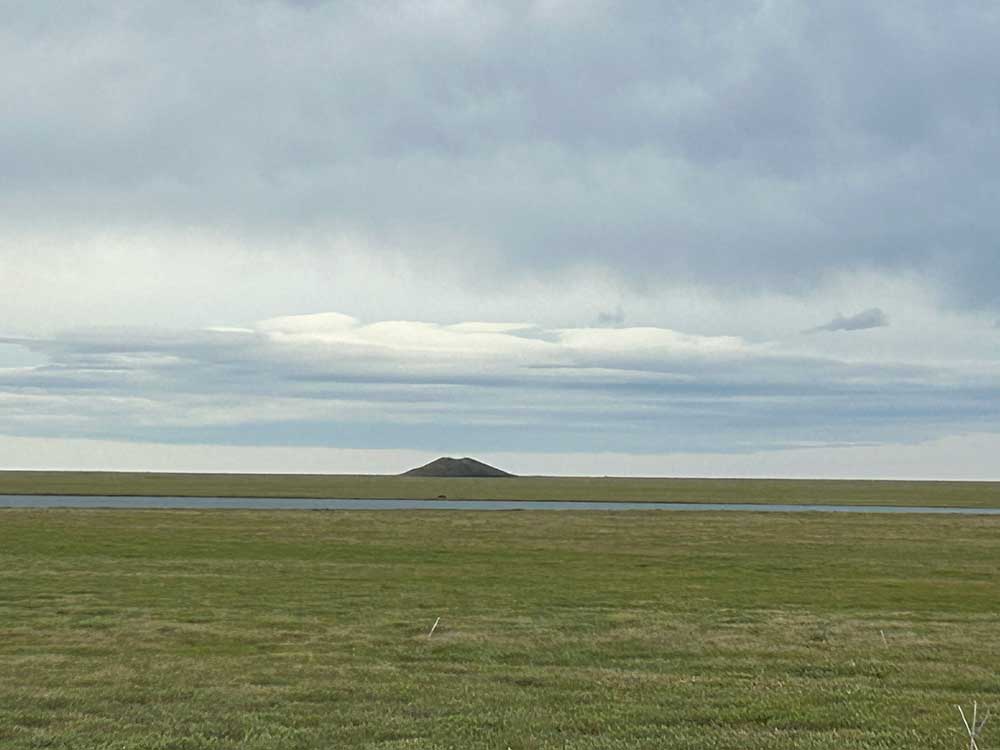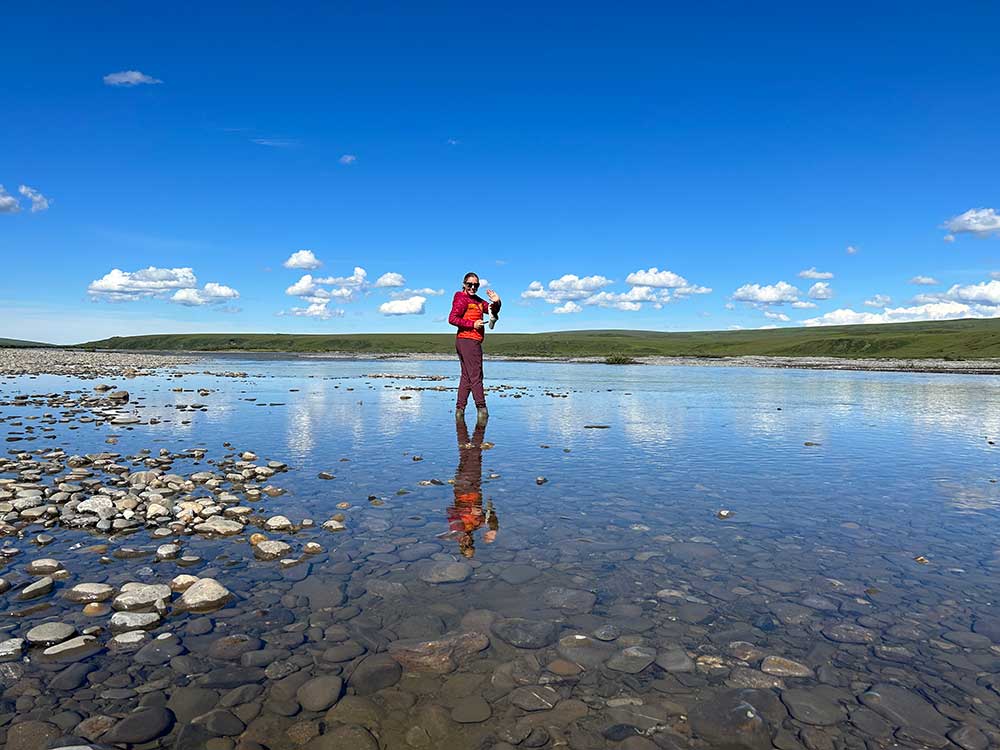
The Arctic is remote, with often harsh conditions, and its climate is changing rapidly — warming four times faster than the rest of the Earth. This makes studying the Arctic climate both challenging and vital for understanding global climate change.
Sandia scientists are using an existing fiber optic cable off Oliktok Point on the North Slope of Alaska to study the conditions of the Arctic seafloor up to 20 miles from shore. Christian Stanciu, project lead, presented their latest findings in December at the American Geophysical Union’s Fall Meeting in San Francisco.
Their goal is to determine the seismic structure of miles of Arctic seafloor. Using an emerging technique, they can spot areas of the seafloor where sound travels faster than on the rest of the seafloor, typically because of more ice. They have identified several areas with lots of ice, said Christian, a geophysicist.
The scientists also used the cable to determine temperatures over the stretch of seafloor and monitored temperature changes over seasons. These data, unlike any collected before, were inserted into a computer model to infer the distribution of submarine permafrost, said Jennifer Frederick, a computational geoscientist.
“One of the innovations of this project is that we can now use a single fiber to get acoustic and temperature data,” Christian said. “We developed a new system to remotely collect both types of data using one fiber strand. We’re getting some interesting results.”
Permafrost and bouncing light
Like leftover roast turkey sitting in the back of the freezer since Thanksgiving, Arctic permafrost is a banquet just waiting to be thawed. Specifically, as the once-living matter that was frozen during the last ice age thaws, microbes begin to digest it and produce waste gases such as methane and carbon dioxide, Jennifer said. Scientists are studying just how large a microbial banquet lies frozen in the Arctic and how large of an impact those gases could have on the global climate.
To study permafrost on the Arctic seafloor, the researchers used pulses of laser light shot down a submarine telecommunications fiber optic cable buried off the coast of Alaska, running north from Oliktok Point. Tiny imperfections in the cable caused light to bounce back to a sensor system. By capturing this light at two wavelengths, or colors, and comparing them, the researchers could determine the temperature of the cable every yard, Jennifer said. This is called distributed temperature sensing.

By looking at light of a different wavelength, the researchers could detect when the cable had been strained by a passing sound wave. This so-called distributed acoustic sensing provided information about the structure of the seafloor to depths of one to three miles, Christian said.
Using this method, the scientists believe they have identified the bottom of the seafloor permafrost at around a quarter of a mile deep. They also found another area with unusually large amounts of ice, possibly consistent with a pingo or “ice pimple,” a domed hill formed by ice pushing upwards, he added. The data analysis for the measurements was done principally by Sandia intern Brandon Herr.
“The fact that we can monitor the temperature continuously, we can now pick up changes from year to year and season to season,” Jennifer said. “We’re specifically looking for unexplainable warm spots. We think we’ll be able to see areas of seafloor seeps — somewhat like springs coming out of the ground, except on the seafloor. We’re interested in them because they’re carriers of deeper, carbon-rich fluids and are an indication of warming and change.”
History and innovations
Sandia has been collecting climate data from northern Alaska for more than 25 years. The current research project started about a year ago and builds off prior work on the same fiber optic cable by Sandia geophysicists Rob Abbott and Michael Baker. This project is funded by Sandia’s Laboratory Directed Research program.
One recent innovation from Christian’s team is a fully operational system that allows near-real time remote data collection. This minimizes time and cost of travel to Oliktok and the risk of losing data when the system is unattended, Christian said. Acoustic and temperature data cannot be collected at the same time, but one or the other now can be collected continuously.
One challenge the team solved during the first year of the project was determining how to calibrate temperature data from the fiber optic cable, Jennifer said. Typically, distributed temperature sensing systems are built with self-check systems such as fiber that doubles back on itself for redundancy or with built-in thermometers. However, since the team is using a telecommunications dark fiber, they needed computational models to validate the seasonal temperature changes they detected. The data analysis for this was done principally by Sandia intern Ethan Conley.

Jennifer uses the data from the distributed temperature sensing and the results from the distributed acoustic sensing modeling to provide constraints to a geophysical modeling code developed by Sandia. The code models liquids and gases flowing through soils underground. Jennifer uses this code to model 100,000 years of geologic history for the studied stretch of Arctic seafloor, including the average temperature of the most recent ice age and how much the sea level has risen. The results of the model are maps of the current distribution of submarine permafrost.
Limitations of the interrogator system the team uses, including the power of the laser and sensitivity of the sensors, keep the scientists from collecting data more than 18-25 miles offshore, Jennifer said. With improvements to the system, she hopes to push the distance out farther.
“This project has many different pieces,” Jennifer said. “I’m looking at temperature and Christian is looking at acoustics to get a subsurface model. Really you need all of these pieces to say something about the larger picture of the current distribution of permafrost and whether we are seeing changes like seeps and how that plays into the larger greenhouse gas emissions picture. Being able to use new tools and push them to their extreme to see what we can learn is really cool.